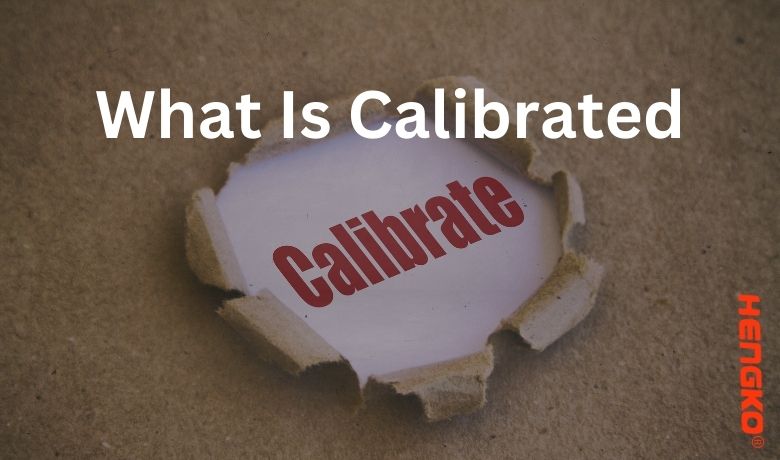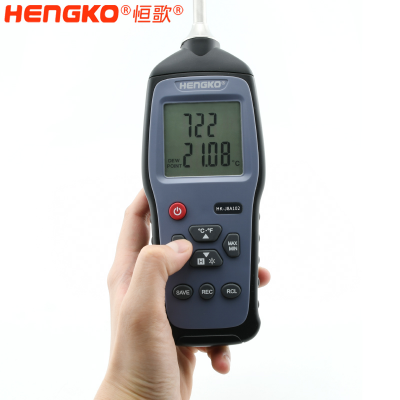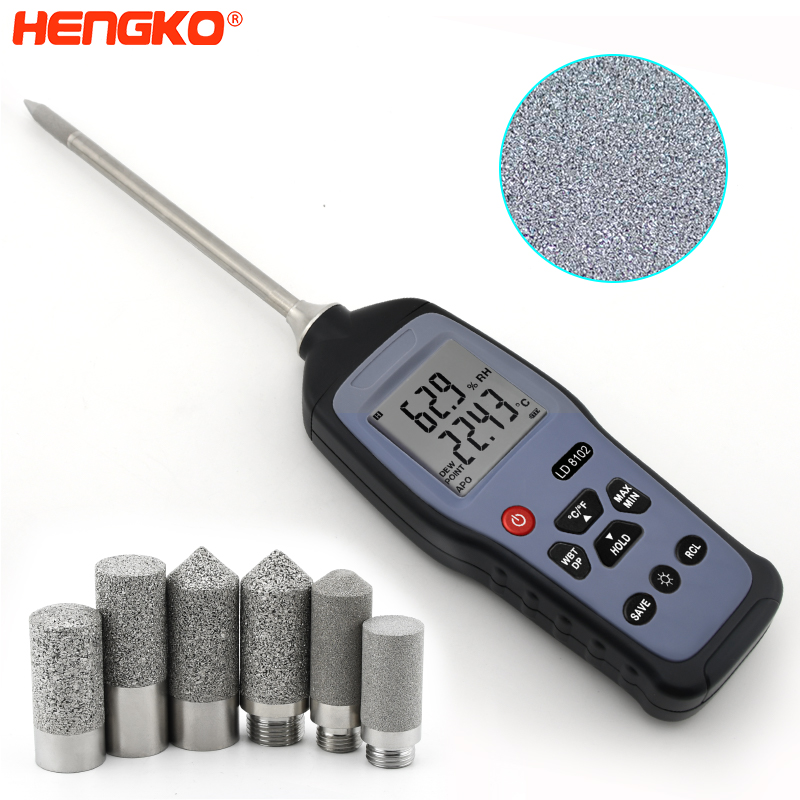
What is Calibrated ?
Calibration is a set of operations to determine the relationship between the displayed value of a measuring instrument or measuring system, or the value represented by a physical measuring tool or standard material, and the corresponding known value to be measured under specified conditions. Calibration is common in various industries. For example, in the electronics industry, instruments often need to be calibrated regularly to ensure accurate sensor measurements. Why do all walks of life need to calibrate instruments or equipment? Because over time, the performance of basically all devices will decrease in some way. Such as the electronic equipment we often use will experience component aging as the use time increases, the equipment loses stability, and deviates from their standard specifications.
Why is Calibration So Important?
Let us take a closer look at the importance of calibration.
1.Cost Saving
Take precautions before they happen. In the long run, calibration can reduce the frequency of some errors and reduce the cost of error losses
2.Improve Safety
In many cases, calibration is also for the personal safety of operators. In dangerous places such as laboratories, factories, and chemical plants, some slight gaps are likely to cause major impacts.It can improve the accuracy of data to improve the safety of equipment operation.

3.Maintain the Service life of Equipment
Over time, the accuracy of any measuring device will decline, and the environment in which the equipment is used will also affect the rate at which it declines. Regular maintenance of the calibration equipment can maintain the service life of the equipment, avoid irreversible damage, and ultimately damage the machine.
Some of the most common types of daily calibration, such as temperature and humidity, pressure, sensor sensitivity, etc.
How to Calibrate the Temperature and Humidity Sensor ?
Calibrating a temperature and humidity sensor is a crucial step to ensure accurate and reliable measurements. Here's a general guide on how to calibrate the sensor:
1. Understand Calibration Requirements:
Familiarize yourself with the calibration requirements of your temperature and humidity sensor. Check the manufacturer's documentation or datasheet for specific calibration instructions, recommended calibration intervals, and calibration points.
2. Obtain Calibration Equipment:
You'll need specialized calibration equipment, including a calibrated reference temperature source (such as a temperature bath or dry-well calibrator) and a humidity reference standard (such as a humidity generator or calibration chamber).
3. Prepare Calibration Environment:
Set up a stable and controlled calibration environment to minimize any external influences on the sensor. Ensure that the temperature and humidity levels in the calibration area are consistent throughout the process.
4. Stabilize the Sensor:
Allow the sensor to stabilize in the calibration environment for a sufficient amount of time. This ensures that the sensor reaches thermal equilibrium with its surroundings before calibration begins.
5. Perform Temperature Calibration:
Place the temperature sensor in the temperature bath or dry-well calibrator set to a known and stable reference temperature. Record the sensor's readings and compare them to the reference temperature. Make any necessary adjustments to the sensor's temperature readings to match the reference values.
6. Perform Humidity Calibration:
If the sensor measures humidity, place it in the humidity generator or calibration chamber set to a known and stable reference humidity level. Record the sensor's humidity readings and compare them to the reference humidity. Adjust the sensor's humidity readings as needed to match the reference values.
7. Record Calibration Data:
Document all calibration data, including the reference values, sensor readings, and any adjustments made during the calibration process.
8. Calibration Certificate:
Some calibration processes may require a calibration certificate issued by a certified calibration lab. If needed, send the sensor to an accredited calibration facility for precise calibration and certificate generation.
9. Calibration Interval:
Establish a regular calibration interval based on the sensor's usage, environmental conditions, and the manufacturer's recommendations. Regular calibration ensures that the sensor remains accurate over time.
10. Maintenance and Storage:
Handle the sensor with care, and store it properly when not in use. Avoid exposing the sensor to extreme conditions or contaminants that could affect its accuracy.
Always follow the manufacturer's specific calibration instructions and guidelines for your particular temperature and humidity sensor. If you are unsure about the calibration process or lack the necessary equipment, consider seeking assistance from a professional calibration service or contacting the sensor manufacturer for guidance. Proper calibration is essential to maintaining the sensor's accuracy and ensuring reliable data for your applications.
How About HENGKO's Temperature and Humidity Sensor Calibrated ?
HG-981 / HG972 both are multi function digital temperature and humidity meter, You can easy to do calibration of temperature and humidity data.
It can be used to assist in the calibration of general temperature and humidity measuring instruments.
It is a temperature and humidity calibration instrument product that integrates industrial-grade, multi-function, temperature and humidity data recording,
high-precision temperature and relative humidity measurement.
It uses an external high-precision probe and has the functions of measuring humidity, temperature, dew point temperature and wet bulb temperature.
It can easily meet the requirements for accurate temperature and humidity measurement in various occasions.
It is an ideal choice for temperature and humidity measurement in laboratories, industries, and engineering.
In addition to these common types of calibration, you may need other different ways to calibrate many different tools.
Choosing appropriate calibration tools and calibration methods can achieve a multiplier effect with half the effort.
How to Choose a Temperature and Humidity Sensor that Does not Require Frequent Calibration ?
To choose a temperature and humidity sensor that does not require frequent calibration, consider the following factors:
1. Quality and Reputation of the Manufacturer:
Opt for sensors from reputable manufacturers known for producing high-quality, reliable instruments. Established manufacturers often use superior components and employ rigorous testing to ensure long-term stability and accuracy.
2. Calibration Stability and Accuracy Specifications:
Check the sensor's datasheet or technical specifications for information on its calibration stability and accuracy over time. Sensors with lower drift rates and higher accuracy tend to require less frequent calibration.
3. Calibration Certificates and Traceability:
Look for sensors that come with calibration certificates, showing that the sensors have been calibrated against traceable standards. This indicates that the sensor's initial accuracy is well-established and can be trusted over time.
4. Built-in Compensation and Self-Calibration:
Some advanced sensors feature built-in compensation algorithms that automatically adjust for changes in temperature and humidity, reducing the need for frequent manual calibration. Self-calibrating sensors can help maintain accuracy without user intervention.
5. Environmental Durability and Protection:
Choose sensors with robust construction and environmental protection to resist damage from dust, moisture, and other contaminants. Well-protected sensors are less likely to drift or degrade over time due to environmental factors.
6. Long-Term Reliability:
Look for sensors with a track record of long-term reliability in real-world applications. User reviews and testimonials can provide insights into how well a sensor performs over extended periods.
7. Calibration Interval Recommendations:
Manufacturers often provide calibration interval recommendations based on their sensor's performance. Choose a sensor with longer recommended calibration intervals, as this indicates the manufacturer's confidence in its stability.
8. Application and Operating Environment:
Consider the specific application and operating environment where the sensor will be used. Some environments may require more frequent calibrations due to extreme conditions or potential contamination.
9. Temperature and Humidity Range:
Ensure that the sensor's measurement range aligns with your application's requirements. Sensors operating within their specified range are more likely to maintain accuracy over time.
10. Cost-Effectiveness:
While investing in higher-quality sensors may initially cost more, they may prove cost-effective in the long run by reducing the need for frequent calibration and replacements.
11. Manufacturer's Support and Warranty:
Consider the level of support offered by the manufacturer, such as technical assistance and warranty coverage. A strong support system can be beneficial if any issues arise during the sensor's lifetime.
By carefully evaluating these factors and choosing a temperature and humidity sensor with a reputation for stability, accuracy, and robustness, you can significantly reduce the need for frequent calibration and ensure reliable long-term performance in your application.
Have questions or need assistance with our temperature and humidity sensors?
We're here to help! Please feel free to reach out to us at ka@hengko.com. Our dedicated team at HENGKO is ready to
provide expert guidance and support to meet your sensor needs. Don't hesitate to contact us today, and let's work
together to find the perfect solution for your temperature and humidity sensing requirements!
Post time: May-18-2021






